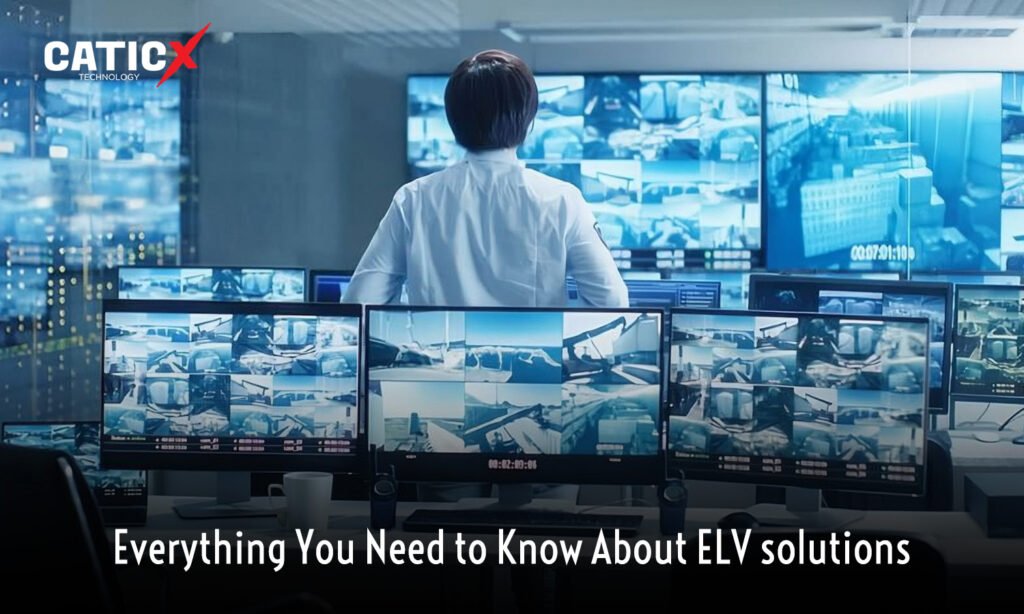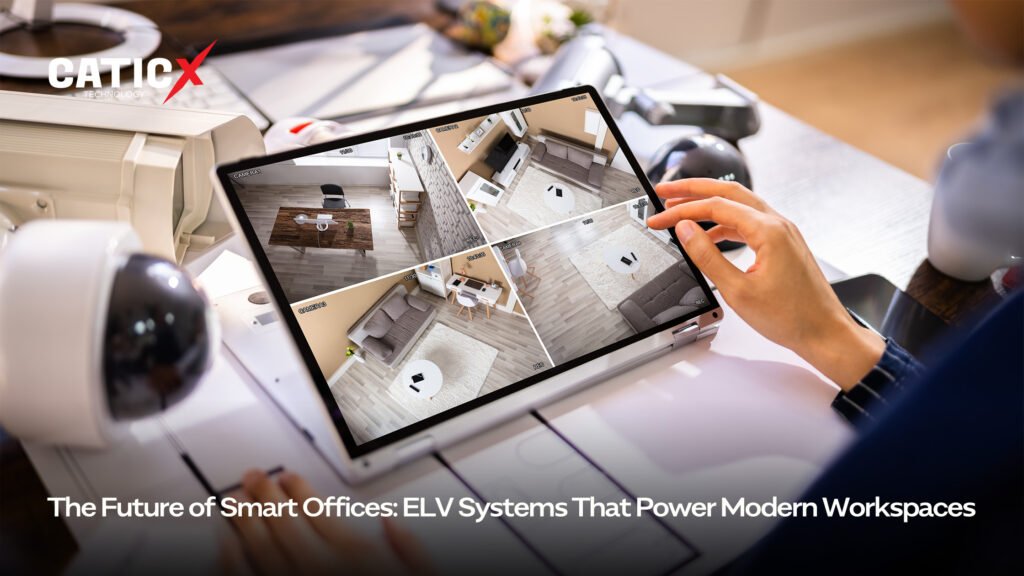
Imagine a world where your building’s systems work in perfect harmony, seamlessly integrating security, communication, and energy management. Sounds like a futuristic dream, right? Well, welcome to the reality of Extra Low Voltage (ELV) solutions – the unsung heroes of modern infrastructure.
In today’s fast-paced, technology-driven world, businesses and homeowners alike are constantly seeking ways to enhance efficiency, security, and convenience. But with the myriad of systems available, it’s easy to feel overwhelmed. That’s where ELV solutions come in, offering a unified approach to managing various building systems. From access control to fire alarms, and from CCTV to energy management, ELV solutions are revolutionizing the way we interact with our built environment.
Here, we will explore deep into the world of ELV solutions, exploring their components, implementation strategies, and the numerous advantages they bring to the table. Whether you’re a building manager, a homeowner, or simply curious about the latest in smart technology, join us as we unravel the complexities of ELV systems and discover how they’re shaping the future of our living and working spaces.
ELV Systems
1.Definition and purpose of ELV
Extra-Low Voltage (ELV) systems refer to electrical installations that operate at voltages not exceeding 50V AC or 120V DC. These systems are designed to enhance safety, efficiency, and functionality in various environments, including residential, commercial, and industrial settings. The primary purpose of ELV solutions is to provide integrated management of low-voltage systems that control communication, security, and building automation.
2.Types of ELV solutions
ELV solutions encompass a wide range of systems and technologies. Here are some common types:
- Security systems
- Access control
- CCTV surveillance
- Fire alarm systems
- Public address and voice evacuation
- Telecommunications
- Building management systems (BMS)
- Audio-visual systems
ELV Solution Type | Primary Function |
Security systems | Protect premises from unauthorized access and threats |
Access control | Manage and monitor entry/exit points |
CCTV surveillance | Provide visual monitoring and recording of activities |
Fire alarm systems | Detect and alert occupants of fire hazards |
Public address | Broadcast announcements and emergency communications |
Telecommunications | Enable voice and data communication |
BMS | Control and monitor building operations |
Audio-visual | Facilitate multimedia presentations and entertainment |
3.Benefits of implementing ELV systems
Implementing ELV solutions offers numerous advantages:
- Enhanced safety and security
- Improved energy efficiency
- Centralized control and management
- Scalability and flexibility
- Cost-effectiveness in the long run
- Compliance with building codes and regulations
- Increased property value
- Better occupant comfort and productivity
By integrating various ELV systems, businesses and property owners can create smart, efficient, and secure environments that meet the demands of modern living and working spaces. As we delve deeper into the key components of ELV solutions, you’ll gain a better understanding of how these systems work together to provide comprehensive building management and control.
Key Components of ELV Solutions
Modern ELV (Extra-Low Voltage) solutions comprise several interconnected systems that work together to enhance building functionality, security, and efficiency. Let’s explore the key components that make up comprehensive ELV solutions:
1.Security Systems
Security systems form the backbone of ELV solutions, providing protection and peace of mind. These systems typically include:
- CCTV surveillance
- Access control systems
- Intrusion detection
- Fire alarm systems
Security Component | Function |
CCTV | Monitors and records activity |
Access Control | Manages entry and exit points |
Intrusion Detection | Alerts to unauthorized access |
Fire Alarm | Detects and warns of fire hazards |
2.Communication Networks
Efficient communication is crucial in any modern building. ELV solutions incorporate robust communication networks such as:
- Structured cabling systems
- IP telephony
- Intercom systems
- Public address systems
3.Building Automation
Building automation systems (BAS) are at the heart of smart buildings, offering:
- HVAC control
- Lighting management
- Energy monitoring
- Elevator management
These systems work together to optimize energy usage, improve comfort, and reduce operational costs.
3.Audio-Visual Systems
Audio-visual (AV) systems enhance the user experience in various settings:
- Conference room equipment
- Digital signage
- Sound systems
- Video walls
These components create immersive environments for meetings, presentations, and public spaces.
By integrating these key components, ELV solutions providers in Dubai and beyond can create intelligent, secure, and efficient building ecosystems. As we move forward, we’ll explore how these components are implemented to maximize their benefits.
Implementing ELV Solutions
Assessment of needs
Before implementing ELV solutions, a thorough assessment of needs is crucial. This involves:
- Identifying specific requirements for each area of the building
- Evaluating current infrastructure and potential limitations
- Determining budget constraints and long-term goals
1.System design and planning
Once needs are assessed, the next step is system design and planning. This phase includes:
- Creating detailed schematics and layouts
- Selecting appropriate components and technologies
- Developing a project timeline and resource allocation plan
2.Installation process
The installation process is a critical phase in implementing ELV solutions. Key steps include:
- Pre-installation preparations
- Cable routing and management
- Equipment mounting and positioning
- Power supply integration
- Initial configuration of devices
4.Integration with existing infrastructure
Seamless integration is essential for optimal performance. Consider the following:
Aspect | Consideration |
Network compatibility | Ensure new systems work with existing networks |
Data management | Integrate with current data storage and processing systems |
User interface | Align new controls with familiar interfaces for ease of use |
5.Testing and commissioning
The final stage involves thorough testing and commissioning:
- Conduct comprehensive system checks
- Perform user acceptance testing
- Fine-tune settings for optimal performance
- Provide training for end-users and maintenance staff
With the implementation process complete, the next step is to explore the advantages that modern ELV solutions bring to your facility.
Advantages of Modern ELV Solutions
Modern ELV (Extra Low Voltage) solutions offer numerous benefits for buildings and their occupants. Let’s explore the key advantages that make these systems an essential component of contemporary infrastructure.
1.Enhanced safety and security
ELV solutions significantly improve the safety and security of buildings through:
- Advanced surveillance systems
- Access control mechanisms
- Fire detection and alarm systems
These features work together to create a safer environment for occupants and protect valuable assets.
2.Improved energy efficiency
One of the most significant advantages of modern ELV solutions is their contribution to energy efficiency:
- Smart lighting controls
- HVAC optimization
- Power management systems
Energy-Saving Feature | Potential Savings |
Smart lighting | Up to 40% |
HVAC optimization | Up to 30% |
Power management | Up to 20% |
3.Streamlined operations
ELV solutions streamline building operations by:
- Centralizing control systems
- Automating routine tasks
- Providing real-time monitoring and reporting
These features lead to reduced operational costs and improved facility management efficiency.
4.Future-proofing buildings
Modern ELV solutions ensure that buildings are prepared for future technological advancements:
- Scalable infrastructure
- Integration capabilities with emerging technologies
- Regular software updates and upgrades
By implementing these advanced ELV solutions, building owners and managers can stay ahead of the curve and adapt to evolving technological needs.
As we’ve seen, modern ELV solutions offer a range of benefits that enhance building performance and occupant experience. Next, we’ll explore how to choose the right ELV provider to implement these cutting-edge systems.
Choosing the Right ELV Provider
When it comes to implementing ELV solutions for your building or facility, selecting the right provider is crucial. Here are the key factors to consider:
1.Expertise and Experience
Look for an ELV provider with a proven track record in the industry. Consider their:
- Years of experience
- Portfolio of completed projects
- Certifications and partnerships
A provider with extensive experience in ELV solutions Dubai will be better equipped to handle complex installations and troubleshoot potential issues.
2.Customization Capabilities
Every building has unique requirements, so it’s essential to choose a provider that offers customizable solutions. Consider:
- Flexibility in system design
- Ability to integrate with existing infrastructure
- Scalability for future expansion
3.After-Sales Support and Maintenance
The best ELV solution provider should offer comprehensive after-sales support, including:
- 24/7 technical assistance
- Regular maintenance schedules
- Firmware and software updates
4.Cost-Effectiveness
While price shouldn’t be the only factor, it’s important to consider the overall value. Compare providers based on:
Factor | Consideration |
Initial cost | Upfront investment for equipment and installation |
Operational costs | Energy efficiency and ongoing maintenance expenses |
Scalability | Potential for future upgrades without complete system overhaul |
ROI | Long-term benefits and potential cost savings |
By carefully evaluating these factors, you can select the best ELV solution provider that meets your specific needs and ensures a reliable, efficient, and future-proof system for your facility.
ELV solutions have become an integral part of modern buildings, offering a wide range of benefits for both residential and commercial spaces. From enhancing security and communication to improving energy efficiency, these systems play a crucial role in creating smart, connected environments. By understanding the key components and implementation process, property owners and managers can make informed decisions about integrating ELV solutions into their infrastructure.
As technology evolves, partnering with a reputable Caticx Technology provider is crucial for tailored ELV solutions and ongoing support. By assessing your specific needs and evaluating potential providers, you can ensure your ELV systems are effective, scalable, and future-proof. Embrace the power of Caticx Technology’s ELV solutions to transform your property into a safer, more efficient, and technologically advanced space.

